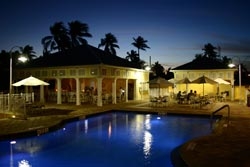 |
Magnum Inspections Inc. Serving South Florida Since 1994 Martin County: (772) 214-9929 Broward/Palm Beach Counties: (954) 340-6615 Email me at: ev@magnuminspections.com |
|
|
|
 |
Magnum Inspections Inc. Serving South Florida Since 1994 Martin County: (772) 214-9929 Broward/Palm Beach Counties: (954) 340-6615 Email me at: ev@magnuminspections.com |
|
|
|
|
|
(DWS) is a comprehensive term for the water system in a house, home (domicile), typically non-industrial. The DWS has a potable (drinking water quality) water supply. This supply may come from several possible sources.
The domestic water system will consist of two basic components:
Domestic water systems have been around since the dawn of time, when the first thinking man located his home 'domicile' next to a running water supply, streams, rivers etc., for an available running water supply of fresh water and send waste water away from his domicile. The same system that serves as a domestic Water System in residential homes, is also seen in commercial, institutional (hospitals, schools, nursing homes) as well as many other more industrial applications. The fresh water system side delivers clean, safe, potable water to each service point in the distribution system, DWS. It is imperative that the clean water not be contaminated by the waste water (disposal) side of the process system. The water may require additional processing prior to qualifications as potable water. The waste water side of a water system, provides a means of receiving, connecting to and removing the waste water from the plumbing system. Sanitary, drainage, check valves, waste and vent systems exist to be physically isolate the waste water from the supply side (potable water); using air gaps, air breaks and backflow preventers, and check valves.
On occasion, certain issues come up requiring some type of backup documentation, below are the code references for certain deficiencies discovered at an inspection.
Martin County: (772) 214-9929 Broward/Palm Beach Counties: (954) 340-6615 Email me at: ev@magnuminspections.com |
|
||
|
Copyright Magnum Inspections Inc. 1994-2018--All Rights Reserved |